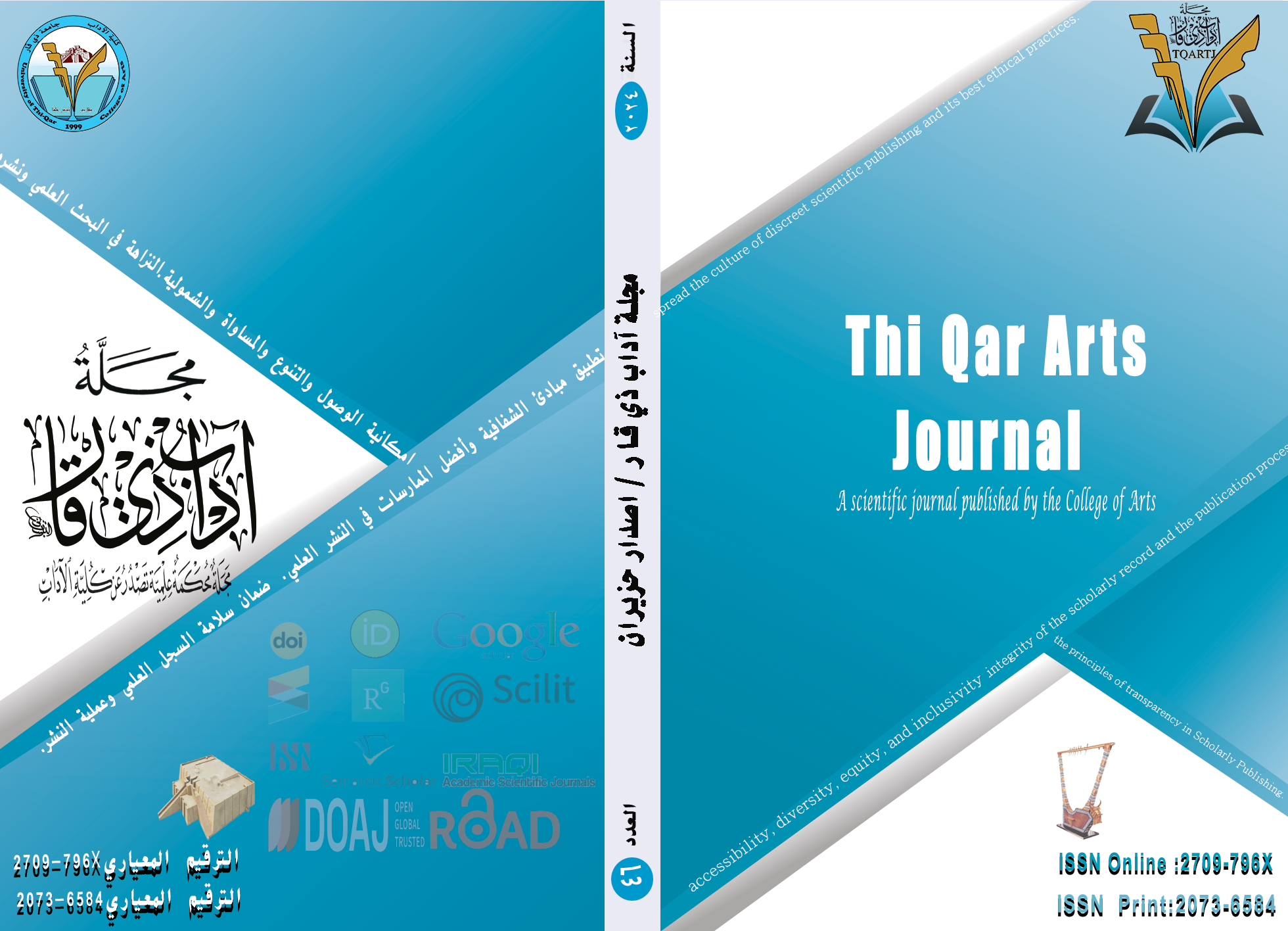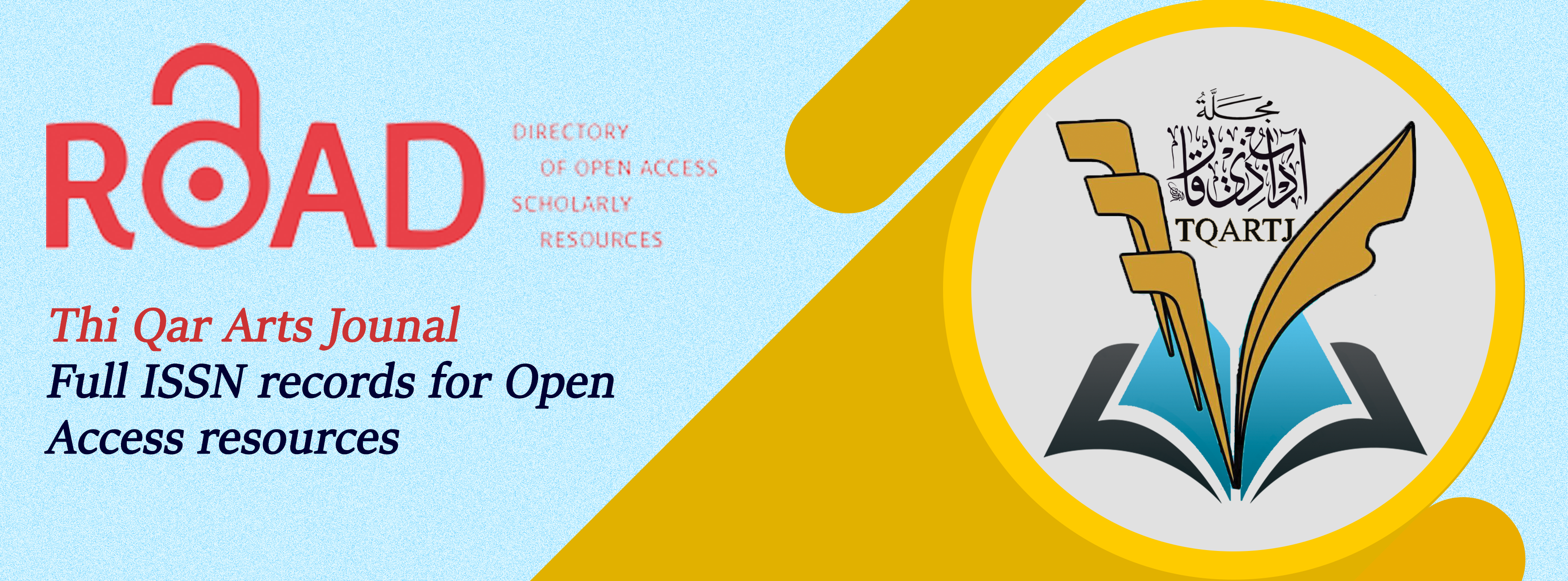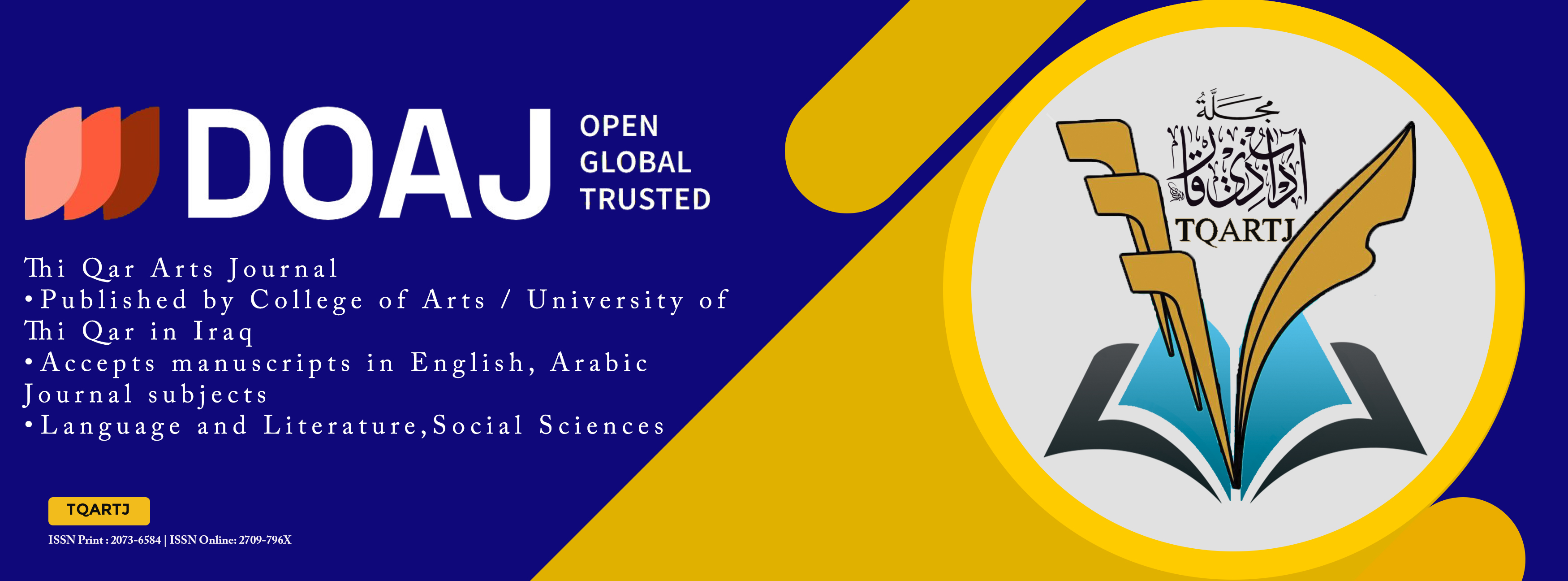The British Stance on the Sati Ritual in India (1828-1832)
DOI:
https://doi.org/10.32792/tqartj.v6i46.626Keywords:
AlSati, Britain, William Bentinck, ban listAbstract
The practice of a widow burning herself after her husband’s death, known as Sati, was an ancient Hindu ritual in India. Indian widows suffered from these social customs and traditions that degraded their status. Family upbringing and low educational levels contributed to women’s acceptance of this view and their bearing of responsibility for their husband’s death, according to some Hindu religious leaders’ interpretations of sacred texts. This led to their submission to the Sati ritual, which imposed self-immolation to atone for the sin of their husband’s death due to their failure to follow religious teachings that would keep him alive. Although these rituals initially began among the upper classes, they quickly spread to other social classes due to the endorsement of religious leaders.
Many powers that controlled India, including Muslims, Mughals, Portuguese, Dutch, and French, tried to oppose and prevent these customs but eventually retreated due to fears of provoking the native population. After the British East India Company took over the administration of India, British officials focused on collecting reports on Sati and sending them to the London government. However, these reports remained unacted upon for a long time until Lord Bentinck became the Governor-General of India, which enabled him to move against these rituals and issue the prohibition order in 1829.
Downloads
References
English Theses and Dissertations:
Abul Faiz Saahuddin Ahmed, The Development of Public Opinion in Bengal 1818 – 1835, Phd, University of London, 1961.
Aishani Chakraborty, Abolition Sati act 1829 changes Impact on Indian society, Phd, Damodaram Sanjivayya Nathional Law University, 2020.
Chitrakala Panda , Sati And Its Suppression In Bengal Presidency During The British Rule, Phd, Utkal University, 1997.
Guy Beckett, Spiritual Arithmetic Religion, Social Statistics And The Making Of An Information Panic About Widow-Burning In India, C. 1750 – 1830, Phd, School Of History, Classics And Archaeology, 2019.
Mohan Chandra Kotnala, Raja Ram Mohan Roy and Indian Awakening in the 19 th sentury Socio religious, Phd, Agra University, 1970.
• English Book
A. Nandy, At the Edge of Psychology,Oxford, 1980.
Bayly, C. A. ‘Rammohan Roy and the Advent of Constitutional Liberalism, 1800-30 in Modern Intellectual History. Vol.2, No.1. 2007.
C. G. SELIGMANN, BRENDA Z. SELIGMANN,the veddas,Cambridge,1911.
Dorothy K. Stein, Women to Burn: Suttee as a Normative Institution, 1978.
David Brich, Widows Under Hindu Law, Oxford University Press, New York, 2023.
G. N. Sir Clark, Science and Social Welfare in the Age of Newton ,Oxford: Clarendon Press, 1937.
H.C. Upreti and Nandini Upreti, The Myth of Sati Nagpur, Bombay, 1991.
James Peggs, The Suttees' Cry to Britain, Seeley & Son, London, 1827.
Jennifer M. Bushaw, Suicide or Sacrifice An Examination of the Sati Ritual in India, 2007.
J.M.Bushaw, Suicide or Sacrifice? An Examination of the Sati Ritual in India,The University of Chicago ,2007.
Joerg Fisch, Burning Women, Oxford University Press, New York, 2006.
John Rosselli, Lord William Bentinck The Making of a Liberal Imperialist 1774 – 1839, University of California Press, 2023.
Joseph Thomas, The Universal Dictionary of Biography and Mythology, Cosimo Incorporated, 2013.
K.K.Chatak, Hindu Revivalism in Bengal, Calcutta, 1991.
Lord William Cavendish Bentinck, Women in World History Minute in Sati, Oxford University Press ,London, 1977.
Majumdar, R.C. & others , British Paramountcy and Indian Renaissance.
M. Tharakan and Michael Tharakan, Status of Women in India: A Historical Perspective, Social Scientist Publishing,1975.
Max Weber, The Protestant Ethic and the Spirit of Capitalism, Routledge, London,2002 .
Meenakshi Jain, Sati Evangelicals Baptist Missionaries and the changing Colonial Discourse,Aryan Books International, New Delhi, 2016.
Nalin C. Ganguly, Raja Ram Mohun Roy, Y.M.C.A. Publishing House, Calcuta, 1834.
Sophie Gilmartin, The Sati, The Bride and the Widow: Sacrificial Woman in the Nineteenth Century, Cambridge University Press. 1997.
T.Sarkar, Rebels, Wives, Saints: Designing Selves and Nations in Colonial Times ,Ranikhet, 2009.
V Lalitha, Sati in the Deccan, Proceedings of the Indian History Congress,1990.
William Wilson Hunter, Lord William Bentinck, Oxford University Press, London.
William Wilson Hunter, Rulers of India: Lord William Bentinck, Clarendon Press,2014.
H.C. Upreti and Nandini Upreti, The Myth of Sati (Bombay, Nagpur, Delhi, 1991
Joerg Fisch, Burning Women ,London, 2006.
( francois Bernier, travels in the moghul empire 1656-1668 , New Delhi,2004.
(William Hodges, Travels in India 1781-1782 and 1783,London,1793.
J. Fisch, Burning Women: A Global History of Widow Sacrifice from Ancient Times to the Present. Oxford,2005.
• English Researcher
Aagya Rai, Sati- From Widow Immolation To Widow Re-Marriage, Journal of Research in Humanities and Social Science, Volume 9, 2021.
Aagya Rai, SATI- From Widow Immolation To Widow Re-Marriage, Journal of Research in Humanities and Social Science, Vol 9, 2021.
Aagya Rai,SATI- From Widow Immolation To Widow Re-Marriage, Quest Journals Journal of Research in Humanities and Social Science Vol 9,No 3 2021,
Alka Sahoo, Status of Hindu Widows in India , International Research Journal of Management Sociology & Humanities, Vol 12,2021.
Bipasha Sinha, Raja Ram Mohan Roy On Paving The Way For Women’s Education, International Journal of Creative Research Thoughts, Vol 9, 2021.
Fisch, J, Humanitarian Achievement Or Administrative Necessity? Lord William Bentick And The Abolition Of Sati In 1829, Journal of Asian History, NO.34, Vol.2.
Jorg Fisch, Dying for the Dead: Sati in Universal Context, Journal of World History, Vol.16, No.3, 2005.
Mohammed Shamsuddin, A Brief Historical Background Of Sati Tradition In India,Journal Of Religion And Philosophical Research.İbn Haldun Üniversitesi | Ibn Haldun University,No3.,2020.
Nehaluddin Ahmad, Sati Tradition - Widow Burning in India: A Socio- legal Examination, Web Journal of Current Legal Issues, 2009.
Nehaluddin Ahmad, Sati Tradition - Widow Burning in India: A Socio- legal Examination, Web Journal of Current Legal Issues, 2009.
Poonam Rajoria, Widow Burning in India: A Socio-Legal Analysis of the Sati Tradition, Journal of Emerging Technologies and Innovative Research (JETIR), Vol5, 2018.
Priya Soman, Raja Ram Mohan Roy and the Abolition of Sati system in India, International Journal of Humanities, Art and Social Studies, Vol. 1, No.2.
Sata Anantha Raman, Women in India asocial and Cultural History, Vol2, Library of Congress Cataloging in Publication Data, New York, 2009.
Shobha Bajpai, An Apostle of Women Issues: Revalidation Modernist Approach of Raja Rammohan Roy’s Ideology, UGC Approved, Voll.II, 2017.
Sima Mallick, Ram Mohan Roy: Social Reforms And Affirmation Of The Modern.
Syed Hussain Shaheed Soherwordi, The Sati- a matter of high caste Hindus or a general Hindu Culture: A case study of Roop Kanwar, Journal of Political Studies, Vol.18, 2009.
Arabic Theses and Dissertations:
Mahmoud Abdul Wahid Al-Qaisi, “The Commercial and Political Activities of the English East India Company in India (1600-1868),” Unpublished Master’s Thesis, College of Arts, University of Baghdad, 1993.
Nadia Jassim Mohammed, “Social Aspects in India During the Islamic Sultanate Era 602-932 AH / 1206-1526 AD,” Unpublished PhD Dissertation, College of Education, University of Mosul, 2017.
Nour Al-Daem Al-Mahdi Al-Sadiq, “The Major Non-Religious Religions in India (A Descriptive Study),” Unpublished Master’s Thesis, College of Fundamentals of Religion, University of Omdurman, 2014.
Arabic and Translated Books:
Abu Al-Rihani Muhammad bin Ahmed, “Verification of What India Has of Accepted or Rejected Sayings in Reason,” Hyderabad Deccan, 1958.
Ahmed Shalaby, “The Major Religions of India (Hinduism - Jainism - Buddhism) with an Appendix on the Issue of Divinity as a Model for Comparison Between Religious Issues,” 11th Edition, Al-Nahda Al-Masria Library, Cairo, n.d.
Rekha Misra, “Women in the Mughal Era,” Translated by Ahmed Al-Jawarna, Al-Kindi Publishing and Distribution House, 1998.
Abdullah Hussein, “The Indian Question,” Kalimat Arabia for Printing and Publishing, Cairo, 2012.
Abu Abdullah Muhammad bin Ibrahim Al-Tanji Ibn Battuta, “The Journey of Ibn Battuta,” Edited by Abdul Hadi, Beirut, 1992.
Gustave Le Bon, “The Civilizations of India,” Translated by Adel Zaiter, Hindawi Foundation for Education and Culture, Cairo, 2012.
Arabic Research Papers:
Ahmed Al-Sayed Al-Shawki, “Clothing and Jewelry of Indian Women Through Indian and Deccan Manuscripts,” Al-Mashriq Message Journal, Special Issue on the Conference of Women in Eastern Civilizations and Literature, Vol. 27, No. 2, 2011.
Zeinab Abdul Tawab Riyadh Khamis, “Rituals and Ceremonies of Non-Religious Religions Between Hinduism, Buddhism, and Shintoism,” Historical Horizons Journal, Vol. 1, No. 2, 2019.
Nawal Jaber Mohammed, “Depictions of Social Life in the East India Company School ‘Sati Ritual as a Model’,” College of Arts, Ain Shams University, n.d.
Downloads
Published
Issue
Section
Categories
License
Copyright (c) 2024 Dr. Ahmed Hashoush Alawi

This work is licensed under a Creative Commons Attribution 4.0 International License.
The journal applies the license of CC BY (a Creative Commons Attribution International license). This license allows authors to keep ownership of the copyright of their papers. But this license permits any user to download, print out, extract, reuse, archive, and distribute the article, so long as appropriate credit is given to the authors and the source of the work. The license ensures that the article will be available as widely as possible and that the article can be included in any scientific archive.



















